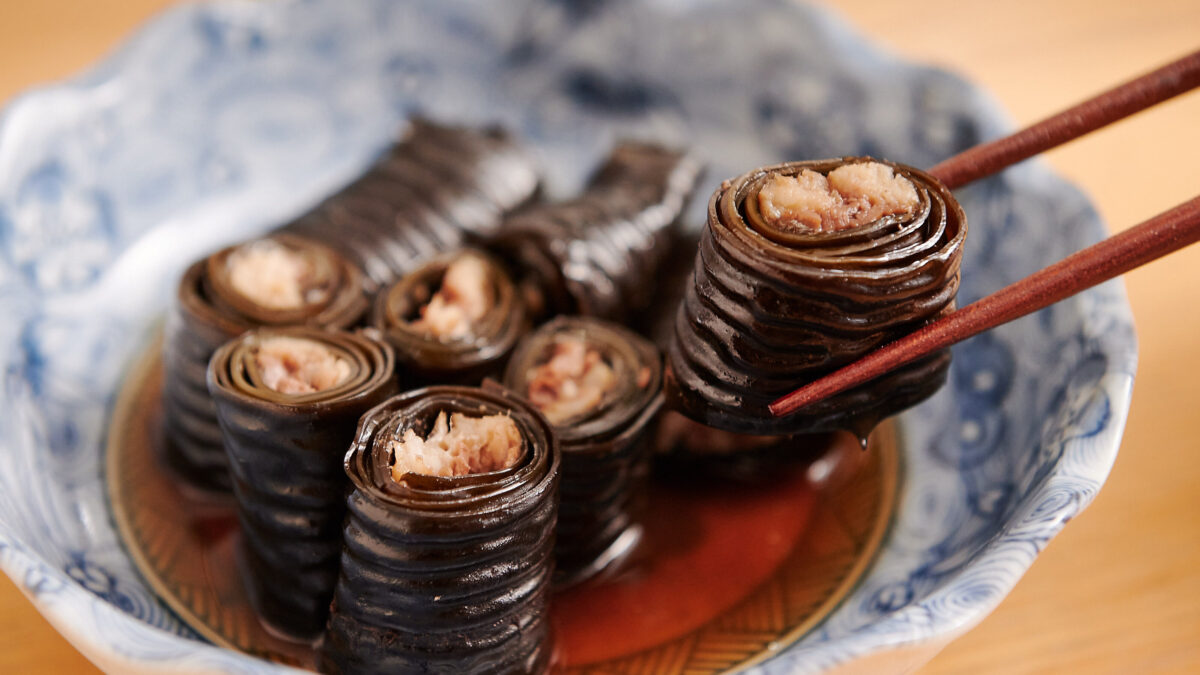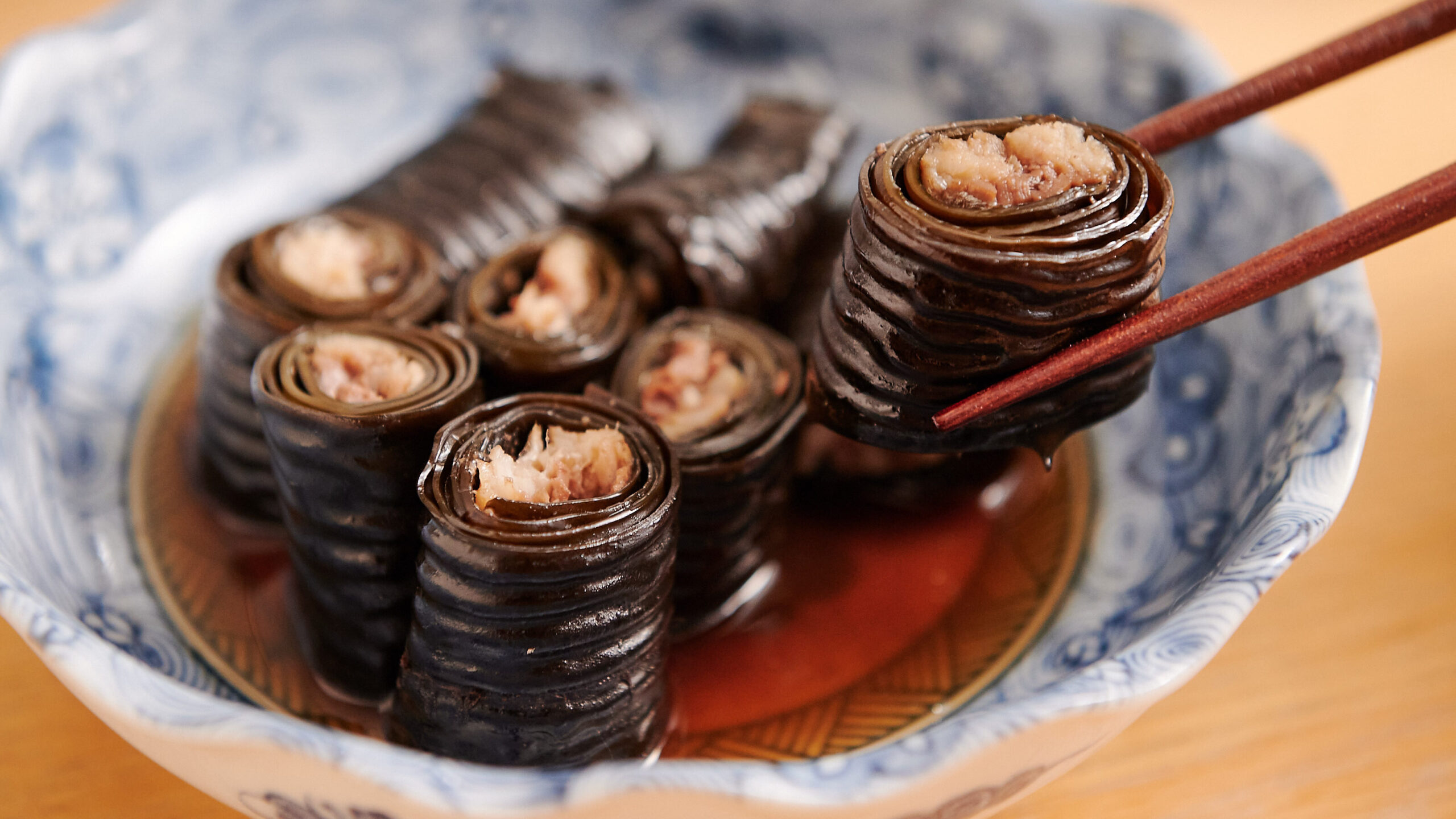
Mie Prefecture boasts a variety of edible seaweeds, and arame, a type of kelp harvested mainly in the Toba-Shima region during the summer, is a particularly important one. It has even been offered to the Ise Grand Shrine since ancient times. Interestingly, abalone and turban shells feed on arame. Because fresh arame has a bit of a bitter taste, it’s soaked in seawater to remove it, then dried and matured from summer to fall. To make “Aramemaki,” this dried arame is rehydrated and used to wrap fillets of seasonal fish, all simmered in a sweet and savory sauce. It’s a dish that beautifully combines the umami of the seaweed with the richness of the fish.
Dish Name: Aramemaki
- Region / Location: Mie Prefecture
- Primary Area of Tradition: Ise-Shima culinary region (Toba area including Toshijima and Kamishima), Hokusei culinary region, Higashi-Kishu culinary region
- Main Ingredients: Sardines (or Pacific saury), dried arame seaweed
How It’s Eaten / Served
Rehydrated arame is wrapped around sardines (or other fish) at least three times and then simmered in a sauce made from soy sauce, sugar, and sake. While sardines are common in Toshijima, Pacific saury is often used in Kamishima and the Higashi-Kishu region. Freshwater fish like goby are used in the Hokusei region. The type of fish varies by area, showcasing the local catches of the season wrapped in arame and simmered to perfection. In the Ise-Shima region, Aramemaki is a cherished dish often enjoyed as a side with rice or as an accompaniment to sake. Arame is also used in other dishes like tsukudani (simmered in soy sauce and sugar), vinegared dishes, simmered dishes, and mixed salads. Aramemaki is considered an indispensable part of the New Year’s meal in its local areas.
Cultural Background and Preservation
Arame has a long history in the Ise-Shima region, having been offered to the Ise Grand Shrine for centuries. In the Toba area, “Aramemaki” is a traditional way of preparing this important seaweed. This dish, packed with the umami of the sea and the nutrients of the fish, is a local favorite. Efforts are being made to promote Aramemaki as a unique dish of Mie Prefecture, highlighting the use of arame. It is also being used as an educational material for promoting local food culture.
Additional information:
- Arame: A type of brown algae (Eisenia bicyclis) with a coarser texture compared to kombu (kelp). Mie Prefecture accounts for most of the domestic production, harvested mainly from July to September in the Toba-Shima region.
- Sardines (Iwashi): Small, oily fish commonly used in Japanese cuisine.
- Pacific saury (Sanma): A long, slender, oily fish popular in Japanese cooking, especially during autumn.
- Sake: Japanese rice wine, used in cooking to add flavor and tenderize ingredients.
The information about regional cuisine featured on this website (Piggy's Grandma of Japan) is summarized and adapted from the Ministry of Agriculture, Forestry and Fisheries of Japan (MAFF) website, "Our Regional Cuisines"Additional commentary is provided based on the unique experiences and perspectives of the site's editors.
The copyright for the original content regarding regional cuisine belongs to the Ministry of Agriculture, Forestry and Fisheries of Japan.
The summaries and adaptations published on this site are intended for informational purposes only. Piggy's Grandma of Japan does not guarantee the accuracy or completeness of this information. For the most accurate and complete details, please refer to the original pages on the MAFF website.


